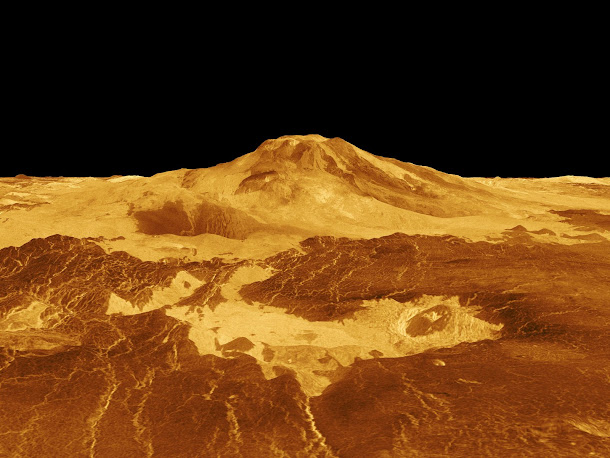Starbridge: A Transgenerational Blueprint for Planetary Transformation
Terraforming the Future: A Transgenerational Blueprint for Planetary Transformation
Image credit: NASA/JPL-Caltech
A New Pyramid for Humanity
Imagine building something so vast, so visionary, that it outlives entire civilizations. The Pyramids of Giza and Cologne Cathedral in Germany were completed over centuries, testaments to human persistence and long-term thinking. What if the next great human endeavor wasn’t architectural, but planetary? Terraforming other worlds in our solar system may sound like science fiction, but it’s increasingly becoming a serious topic in scientific and technological circles. As someone preparing for a future in hard science fiction game design and with a deep fascination for planetary science, this topic bridges creative imagination with emerging research.
Terraforming is the science and art of reshaping a planet’s surface, atmosphere, and ecosystems to make it more Earth-like and, eventually, habitable. Starbridge focuses not on far-off exoplanets but on our solar system, where the world begins with Venus, Mars, and Titan. They become the canvases for a long-term, transgenerational human project.
The Building Blocks of Habitability
To terraform a planet, one needs to replicate what makes Earth livable:
-
Atmosphere – A breathable mix of nitrogen (78%) and oxygen (21%) at Earth-like pressures.
-
Magnetosphere – A protective magnetic field that shields against solar and cosmic radiation.
-
Continental Crusts – Stable, chemically diverse surfaces for future biomes and infrastructure.
-
Biosphere – The final, most fragile layer of a habitable planet, which depends on the first three.
Humanity's first goal isn’t planting trees, it's preparing the stage so life can one day flourish. Therefore, the final step of setting up the biosphere must wait.
Mars: The Red Frontier
Image credit: Daein Ballard (CC BY-SA 3.0)
Mars has been humanity’s first terraforming candidate for decades. It's cold and dry, with a tenuous atmosphere—about 0.6% of Earth’s pressure. The video “How to Terraform Mars” outlines three stages:
-
Warming the planet via orbital mirrors or greenhouse gases.
-
Thickening the atmosphere using CO₂ from the poles and subsurface.
-
Importing nitrogen from Saturn’s moon Titan, to stabilize pressure and support Earth-like life.
However, Mars lacks a magnetosphere. One proposal is to station a powerful magnetic field generator at Mars’ L1 point (between the Sun and Mars), creating a stand-in for a planetary dynamo. This would reduce atmospheric stripping by the solar wind. In this proposal by NASA, it outlines the way to provide a magnetosphere for Mars to serve as protection from the solar flares and radiation.
Venus: A Hell in Need of Harmony
Image credit: NASA/JPL
Unlike Mars, Venus is dense and hot, with a surface temperature of 464°C and an atmospheric pressure 92 times that of Earth. Its toxic, CO₂-rich atmosphere creates an intense greenhouse effect.
Building further on “How to Terraform Venus,” a space mirror alone won’t suffice. Instead, a more comprehensive system is needed:
-
Orbital shade station, The Seraph Citadel – A vast orbital ring or station could reduce solar radiation and house a magnetosphere generator.
-
Atmospheric reduction – Strip CO₂ from the atmosphere and convert it into carbon bricks or launch it into orbit.
-
Adonis, the artificial moon – Created from excess CO₂, this moon would orbit Venus, serving as both a light reflector and symbol of renewal.
This not only cools the planet but begins the transformation of pressure and surface conditions. Like Mars, Venus would also need nitrogen, another role for Titan’s rich atmospheric reserve.
Titan: The Silent Enabler
Saturn’s largest moon, Titan, has a thick nitrogen atmosphere. Although it’s far from the Sun and extremely cold, it could be the key resource hub for terraforming Venus and Mars. Nitrogen harvested from Titan would be shipped to both planets, balancing their atmospheres and providing inert gases necessary for breathing and pressure.
A fleet of nuclear-powered freighters could deliver this essential cargo, part of a centuries-long logistical infrastructure that echoes today’s global shipping networks.
What is the purpose of Starbridge?
This isn't just pure fantasy. Climate models, aerospace engineering, and planetary science are converging on the tools to make terraforming theoretically possible. NASA has already explored magnetosphere concepts for Mars. This is an evolving scientific conversation that needs more public imagination.
Try to think a thousand years ahead where long-term projects outlive political cycles and corporate profits. Terraforming is not just a technological challenge; it's a test of human unity, stewardship, and vision.
Terraforming can be a solution to the global issue that are rising populations and environmental degradation where Earth won’t support unchecked human growth forever. While Earth must remain humanity's priority, terraforming offers a backup plan and a psychological horizon to rally around.
Terraforming has always been a subject of personal fascination. It is the ultimate “what if?” for the next step of our civilization: a fusion of hope, caution, and engineering. Through a variety of mediums from books to video games to TV series, these ideas can be brought into public imagination. Terraforming is more than science, it is myth-making for the modern world.
Starbridge is the creation of that dream, to paint a vision so vivid that humanity believe it to be its future. There may be variations of that future, but it is a future beyond a united Earth.
References:
- Kurzgesagt – In a Nutshell. (2022, June 26). How to terraform Venus [Video]. YouTube. https://www.youtube.com/watch?v=G-WO-z-QuWI
- Kurzgesagt – In a Nutshell. (2022, June 19). How to terraform Mars [Video]. YouTube. https://www.youtube.com/watch?v=HpcTJW4ur54
- Dunbar, B. (2017, March 27). NASA’s magnetic shield could help protect Mars atmosphere. Phys.org. https://phys.org/news/2017-03-nasa-magnetic-shield-mars-atmosphere.html
- NASA Science. (n.d.). Titan science highlights. NASA. https://science.nasa.gov/mission/cassini/science/titan/
- NASA Science. (n.d.). Venus exploration. NASA. https://science.nasa.gov/venus/exploration/
- NASA Science. (n.d.). Mars Exploration Rovers - Spirit and Opportunity. NASA. https://science.nasa.gov/mission/mars-exploration-rovers-spirit-and-opportunity/





Comments
Post a Comment